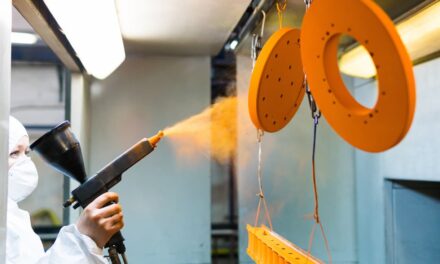 At the Silverstone circuit during this year’s Formula Student Competition, 134 teams from universities in 34 countries competed in racing cars they had designed and constructed themselves. One of the most innovative cars was the Forze V from the Delft University of Technology.
At the Silverstone circuit during this year’s Formula Student Competition, 134 teams from universities in 34 countries competed in racing cars they had designed and constructed themselves. One of the most innovative cars was the Forze V from the Delft University of Technology.
The car weighed 280kg, was 3m long, had 18kW of power (fuel cell only) or temporarily up to 60kW (including regenerative braking power) and a speed of about 120km/h. But, different from other electric vehicles in the race, it was powered by a fuel cell rather than a battery.
The team had already competed in 2011 with the Forze IV, but the new car needed to be more powerful, faster, lighter and more reliable. It already featured standard solenoid control valves and controllers from Bürkert so the team decided to contact the company for fuel cell specific components and technology.
After a preliminary meeting at Bürkert, the task was soon clear. The student team presented its flow plan for the fuel cell and explained the basic technical requirements. The goal was to find a solution for the hydrogen supply, which had to be as compact and lightweight as possible while making use of standard components from the Bürkert product portfolio. Johann Gunnesch, a motorsports enthusiast and engineer at the Systemhaus of Bürkert Fluid Control Systems in Ingelfingen, and his team developed a proposal for an integrated solution. A compact aluminium block, which saved considerably on material, provided room for a safety valve, a solenoid control valve for controlling the hydrogen pressure, a mass flow meter, an overflow valve, as well as temperature and pressure sensors.
Gunnesch explains the function of the low pressure block: “Coming from the tank, the hydrogen first passes a shut-off valve. An integrated excess pressure safety valve has to release the hydrogen in the event of a malfunction. A Type 2833 solenoid control valve meters the hydrogen for the fuel cell by controlling the pressure in the fuel cell. A Type 8711 flow meter measures the supplied quantity of hydrogen and sends this data to the vehicle’s electronic control system. The pressure and temperature are likewise monitored constantly by sensors that send their readings to the controller to enable the fuel cell to operate under optimal conditions at all times. Furthermore, there is a Type 6011 overflow valve, which can evacuate the entire system in case of emergency.”
After the design phase for the Forze V was completed, the block was adapted to the race car’s systems. There were also special requirements such as a mirror-inverted design or the 90° shift of a fitting. Finally, the low pressure block and a second, identical, replacement block were manufactured in Ingelfingen and delivered to Delft. Shortly after came positive feedback: All systems go!
 Having found an extremely compact and lightweight solution for the hydrogen supply, the Delft Racing Team became increasingly dissatisfied with its solution for the air supply. So, the Bürkert team joined forces with the students to tackle this problem.
Having found an extremely compact and lightweight solution for the hydrogen supply, the Delft Racing Team became increasingly dissatisfied with its solution for the air supply. So, the Bürkert team joined forces with the students to tackle this problem.
Gunnesch explained that an ultra light, one-of-a-kind component, was needed. This was based on a Bürkert flow meter for gases, which was reduced to the bare bones, and advanced sensor technology that is not yet available on standard products. The result was an ultra-compact solution for measuring the air flow in a compact design weighing several kilograms less than a solution using standard components. The Aerospace and Engineering Department at Delft tested the air flow meter and confirmed the precision of the solution.
With the exception of the stack, the humidifier, the recirculation pump and the compressor, the rest of the fuel cell technology on the Forze V comes from Bürkert.
“Thanks to the Bürkert solutions we were able to double the performance of the fuel cell in the Forze V in comparison with the Forze IV. At the same time, the weight of the vehicle was reduced by about 10% from 312kg to 280kg,” said Forze team leader, Jan Jaap Treurniet.
The race car sprints from 0-100 km/h in less than five seconds and can run at full speed for about an hour on 600 grams of liquid hydrogen: in this case, 28 litres at 350 bar.
By finishing in the midfield in Silverstone, the Forze Hydrogen Racing Team proved that it is possible to keep pace in motorsports by using hydrogen instead of petrol.
Bürkert Fluid Control Systems
T: 01285 648720

